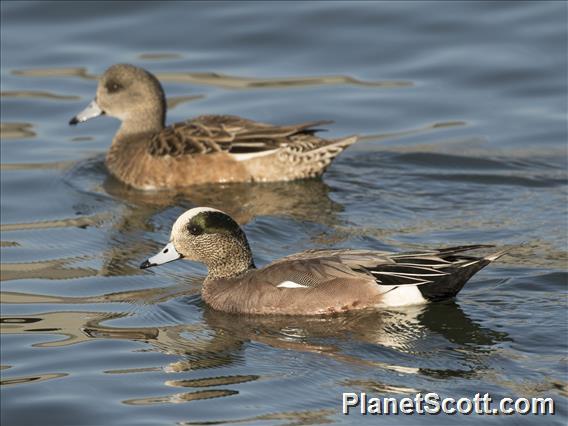American Wigeon (Mareca americana)

American Wigeon (Mareca americana)
×


American Wigeon (Mareca americana)
About American Wigeon (Mareca americana)
- Kingdom: Animals
- Phylum: Chordates
- Class: Birds
- Order: Anseriformes
- Family: Swans, Geese, and Ducks
The American wigeon, also known as the baldpate, is a species of dabbling duck found in North America. Formerly assigned to Anas, this species is classified with the other wigeons in the dabbling duck genus Mareca. It is the New World counterpart of the Eurasian wigeon.
Source: Wikipedia
Visits
-
-
-
2007-01-10
Heron's Head Park, United States of America -
2007-04-07
Torrey Pines State Reserve, United States of America -
2008-01-26
Heron's Head Park, United States of America -
2008-12-06
Colusa National Wildlife Refuge, United States of America -
2008-12-06
Suisun Marsh, United States of America -
2009-11-22
Palo Alto Baylands, United States of America -
2010-01-03
Sacramento National Wildlife Refuge, United States of America -
2010-02-21
Lerma Marshes, Mexico -
2010-05-29
Saint George Island, United States of America -
2012-04-14
Pier 94, United States of America -
2012-12-13
Heron's Head Park, United States of America -
2013-03-30
Heron's Head Park, United States of America -
2013-10-12
Redwood Valley, United States of America -
2013-12-01
Heron's Head Park, United States of America -
2014-01-01
Heron's Head Park, United States of America -
2014-01-11
Heron's Head Park, United States of America -
2014-02-16
Golden Gate Park - Lloyd Lake, United States of America -
2014-02-22
Santa Fe Grade, United States of America -
2014-03-10
Elfin Forest Preserve, United States of America -
2014-12-27
Heron's Head Park, United States of America -
2015-01-20
Arrowhead Marsh, United States of America -
-
-
-
-
-
-
-
-
-
-
-
-
-
-




